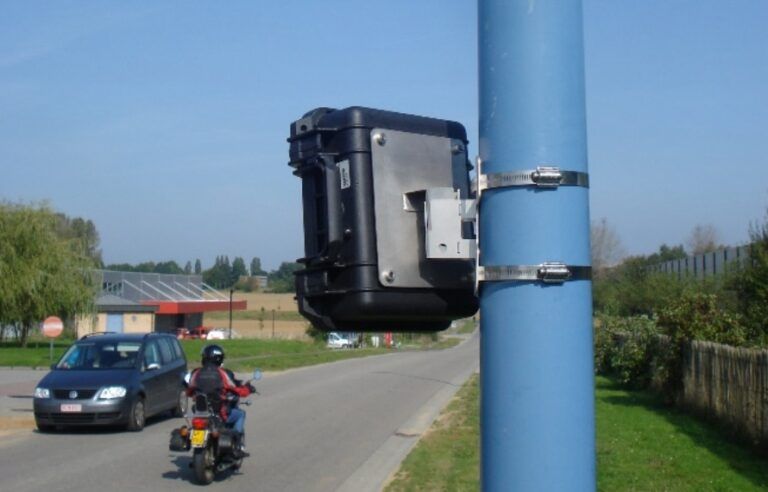At Stand A64 at the ITS European Congress in Seville, the TMS-SA radar system from Quarterhill will be on display. It is a system that is aiding police in traffic enforcement and providing a true picture of driver behavior by collecting speed data unobtrusively
To ensure road safety and manage speeding effectively, law enforcement agencies globally are turning towards smarter, technology-driven solutions. One such innovative approach involves the use of unobtrusive speed radars for collecting data on the frequency of speeding vehicles. Among the technologies is the TMS-SA from Quarterhill, a non-intrusive roadside device designed to gather traffic data without alerting or being noticed by drivers.
Traditional methods of speed detection, including radar speed-display signs or systems that require illumination, often fall short of their objective. Their visibility can alter driving behavior momentarily, as drivers decelerate upon noticing these devices, only to accelerate again once out of sight. This reactionary behavior makes it challenging for law enforcement to gauge the true nature of speeding in any given area accurately.
Speed and length-based classes
Unobtrusive radar systems like the Icoms TMS-SA offer a significant advantage in this aspect. These devices can be discreetly installed, for instance, on lamp posts, where they autonomously collect data on traffic speed without affecting driver behavior. Such an approach enables police departments to validate complaints regarding speeding with hard data, distinguishing between perceptions of speeding and actual speeding trends.

The TMS-SA radar is special, not just because it can tell how fast a vehicle is going, but also because it records the vehicle’s length. For example, it can tell a big truck and a small car apart. This is useful for police when people complain about heavy goods vehicles (HGVs) traveling through their neighborhood.
“BY ADOPTING UNOBTRUSIVE RADAR SYSTEMS FOR TRAFFIC DATA COLLECTION, POLICE CAN ACCUMULATE A WEALTH OF ACCURATE, ACTIONABLE INFORMATION”
Citizen reports about speeding and oversized vehicles in neighborhoods often require verification. Is the issue as widespread as believed? Is it a matter of vehicles marginally exceeding speed limits by driving 35km/h in a 30km/h zone, for example, or are there more egregious violations involving higher speeds? Only an objective measurement can provide clarity. The Icoms TMS-SA, with its ability to operate continually while remaining unnoticed by drivers, serves this need perfectly, offering an unbiased and reliable view of how fast vehicles are truly traveling.
A compelling case study underscoring the effectiveness of unobtrusive speed radars is their recent adoption by the Berlin police. The department installed five TMS-SA radar traffic classifiers across various city locations. These devices were integrated into the urban landscape and hung on lamp posts, where they resulted in the collection of over six million traffic speed measurements. The analysis of this anonymous data revealed a startling fact: 25% of drivers in the monitored areas were speeding. In some neighborhoods, this figure alarmingly exceeded 90%. This insight marked a stark contrast to previous data collected through more visible means, which suggested only a 5% infraction rate.
An unobtrusive radar system
One critical insight from Berlin’s experience is that visible speed-detection systems, especially those that flash or signal the driver in real time, inadvertently prompt drivers to reduce their speed. This not only affects the accuracy of data collection but also triggers a domino effect, slowing down the following traffic unnecessarily.
By adopting unobtrusive radar systems for traffic data collection, police can accumulate a wealth of accurate, actionable information. This not only aids in the validation of speeding complaints but also empowers law enforcement to tailor their enforcement strategies more effectively — all while maintaining the natural flow of traffic. Unnoticeable speed radars like the Icoms TMS-SA demonstrate how technology, when applied with finesse, can significantly enhance traffic safety and management, providing a clear path towards more secure and safer communities for vulnerable road users.
This article first appeared in the June 2025 edition of TTi magazine





